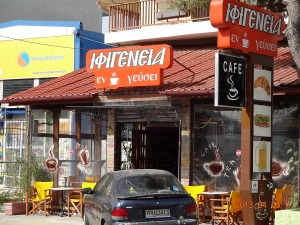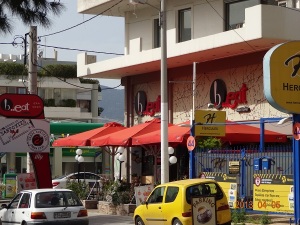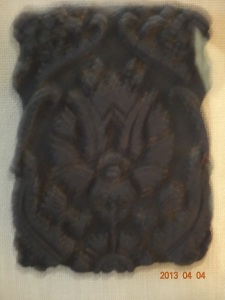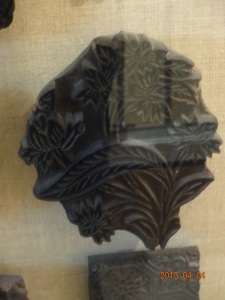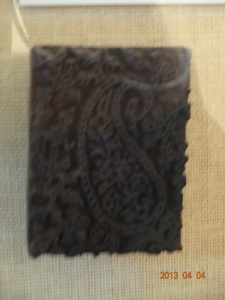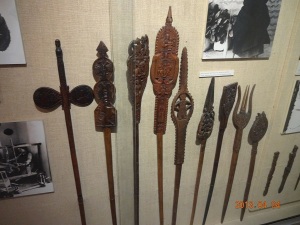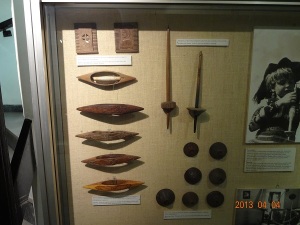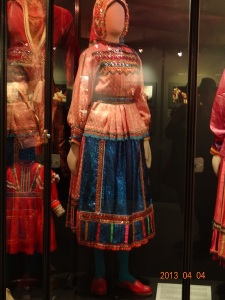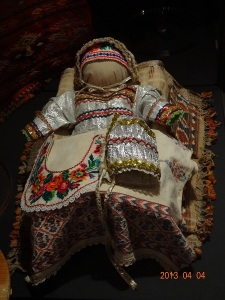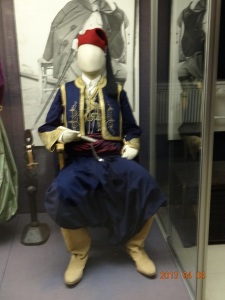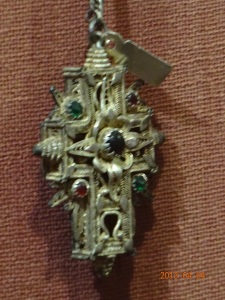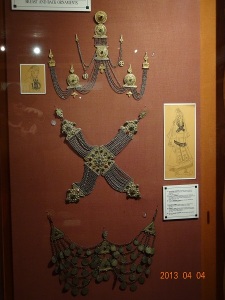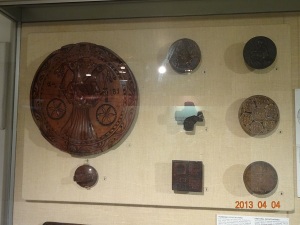Yesterday, I got up VERY EARLY (5:30) and got ready to go into the city. I was out the door by 7:10, stopped at Iphigenia Café but the door was locked (the other door was open, as I
later found out), so I went to Beat, which is open 24 hours, 365 days a year (even Christmas and Easter). The same young woman waited on me a few weeks ago. She apologized for her bad English, which was quite good. She’s very friendly, but would laugh as I mispronounced modern Greek. (Remember, my pronunciations are based on
the values for ancient Greek.) I bought a tiropeta (cheese pie) and a cappuccino. After eating and drinking, off I went into Athens.
The Acropolis opens at 8, but I was there at 7:50. So I walked, and walked, and walked, looking for the entrance. I passed the Odeon of Atticus, up and around the Acropolis. When I saw the flag flying on the Acropolis, I realized what I had done.
I walked nearly all the way around the Acropolis, having missed the entrance.
For a while, I was angry, but I can go another day. Instead, I wandered around the small streets along the hilly side of the Acropolis. It was very interesting. There was a sign for the Museum of Greek Folk Art, but I thought nothing of it, since I didn’t think that I could find it. Signage is really bad. After winding my way through the narrow streets, I found myself at the museum. They actually turned on the lights for me–literally.
This is for the ladies at Whimsies Incognito, since I know that some of them love embroidery. I took some close-ups of the patterns used on many of the different islands.
The mezzanine contained textile tools and wood blocks for making patterns on cloth.
There were the traditional costumes that varied from island to island and from region to region on the mainland. Typically, there was way too much of which to photograph, and I wasn’t even sure I was allowed to photograph. I saw no signs and I only took photos when the employees were not around, which wasn’t hard. Two of them were engrossed in conversation that finally broke up when more and more people entered the museum. The museum was on at least 4 floors, not counting the mezzanine. I had most of the floors to myself for most of the time I was there.
The costumes were very colorful, but they were mostly of the women.
There were few men’s costumes, but these are the ones I photographed because I found them interesting, and they give me some ideas. They aren’t as colorful, but they are nice.
This is the traditional Cretan costume.
The prices in the gift shop for handmade lace, et al. was pricy, but it would be for handmade goods. They had some beautiful things there. The museum also had silver work, ornamentation, jewelry–for which I have some pictures–guns, things used in religious
services, etc. I took several photos of these, since I found them interesting. The wooden blocks are for making church bread. When the priest gets the loaf, he cuts out the bread
with the symbols on them for communion; the rest of the loaf was cut up and handed out by the priest after church. My mother used to make the loaves occasionally; the women in the church took turns doing it.
This happened in the past, but I can’t help remembering it. My brother and I helped the priest as stand-by altar boys when the regular altar boy wasn’t there. After communion and after the bread was handed out, there was usually some left over, which we then would put out for the birds. This went on until one of the women asked the priest if this was kosher (for want of a better word). Our priest asked another priest and he was told that it WAS NOT; the bread was supposed to be buried in the earth, that the birds were not to have it. So people would take home the bread and bury it in the ground. My father found the entire idea idiotic and refused to follow it. To him, the worms ate the bread, and the worms were eaten by the birds. What was the difference? I remember refusing to take the bread one time and I told the priest flatly that I was going to give it to the birds. Needless to say, I wasn’t given the bread, and I certainly didn’t get any brownie points–not that I really cared. (Ass-kissing has never been one of my strong points.)
